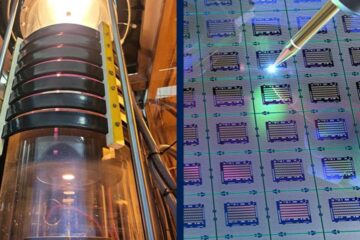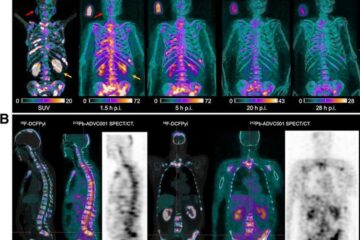Bright light yields unusual vibes

By bombarding very thin slices of several copper/oxygen compounds, called cuprates, with very bright, short-lived pulses of light, Ivan Bozovic, a physicist at the U.S. Department of Energy’s Brookhaven National Laboratory, and his collaborators have discovered an unusual property of the materials: After absorbing the light energy, they emit it as long-lived sound waves, as opposed to heat energy. This result may open up a new field of study on cuprates — materials already used in wireless communications and under investigation for other applications in the electronics industry.
As the light pulses strike each film, illuminating an area only about a thousandth of a millimeter across, they transfer their energy to the film’s atoms. In response, the atoms vibrate, and tiny sound wave “packets,” called phonons, spread through the sample. Bozovic observes that, mysteriously, these emitted sound waves do not die out quickly, as they do with other materials. Instead, the atoms oscillate many times before dissipating the absorbed energy. “This is very unusual, as it seems that the atoms find it hard to convert these oscillations into ordinary thermal energy (heat),” said Bozovic.
Through further studies, Bozovic hopes to learn more about this phenomenon, the first step toward finding possible applications for it. For example, this work could contribute to the development of a phaser, a laser-like device that emits phonons instead of light. “Much more research needs to be done,” Bozovic said. “We don’t know yet how this property might be useful. However, I have little doubt that the phaser would be a very useful scientific tool for a broad new class of experiments,” Bozovic said.
Bozovic will present his work at 1:03 p.m. on Friday, March 26, in room 517A, during the “Excitation in Strongly Correlated Materials II” session. This research is funded by the Air Force Office of Scientific Research, the National Science Foundation, and a Laboratory Directed Research and Development grant from the U.S. Department of Energy’s Los Alamos National Laboratory, where part of the work was performed.
NOTE: This press release describes a talk being given by a scientist from the U.S. Department of Energy’s Brookhaven National Laboratory at the March 2004 meeting of the American Physical Society, taking place March 22-26 at the Palais de Congres, Montreal, Canada (http://www.aps.org/meet/MAR04/).
One of the ten national laboratories overseen and primarily funded by the Office of Science of the U.S. Department of Energy (DOE), Brookhaven National Laboratory conducts research in the physical, biomedical, and environmental sciences, as well as in energy technologies and national security. Brookhaven Lab also builds and operates major scientific facilities available to university, industry and government researchers. Brookhaven is operated and managed for DOE’s Office of Science by Brookhaven Science Associates, a limited-liability company founded by Stony Brook University, the largest academic user of Laboratory facilities, and Battelle, a nonprofit, applied science and technology organization. Visit Brookhaven Lab’s electronic newsroom for links, news archives, graphics, and more: http://www.bnl.gov/newsroom
Media Contact
All latest news from the category: Power and Electrical Engineering
This topic covers issues related to energy generation, conversion, transportation and consumption and how the industry is addressing the challenge of energy efficiency in general.
innovations-report provides in-depth and informative reports and articles on subjects ranging from wind energy, fuel cell technology, solar energy, geothermal energy, petroleum, gas, nuclear engineering, alternative energy and energy efficiency to fusion, hydrogen and superconductor technologies.
Newest articles

Silicon Carbide Innovation Alliance to drive industrial-scale semiconductor work
Known for its ability to withstand extreme environments and high voltages, silicon carbide (SiC) is a semiconducting material made up of silicon and carbon atoms arranged into crystals that is…

New SPECT/CT technique shows impressive biomarker identification
…offers increased access for prostate cancer patients. A novel SPECT/CT acquisition method can accurately detect radiopharmaceutical biodistribution in a convenient manner for prostate cancer patients, opening the door for more…

How 3D printers can give robots a soft touch
Soft skin coverings and touch sensors have emerged as a promising feature for robots that are both safer and more intuitive for human interaction, but they are expensive and difficult…





















